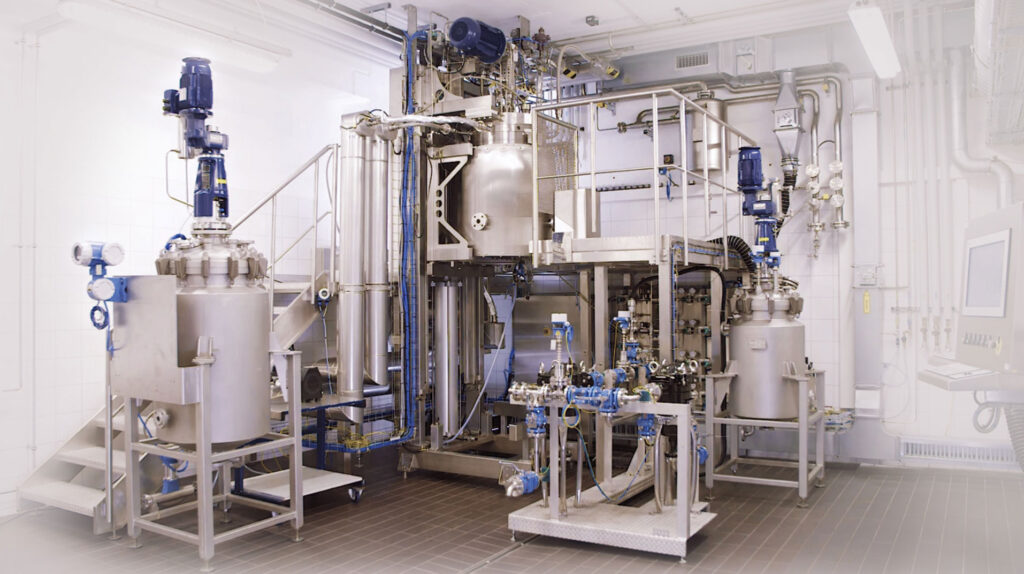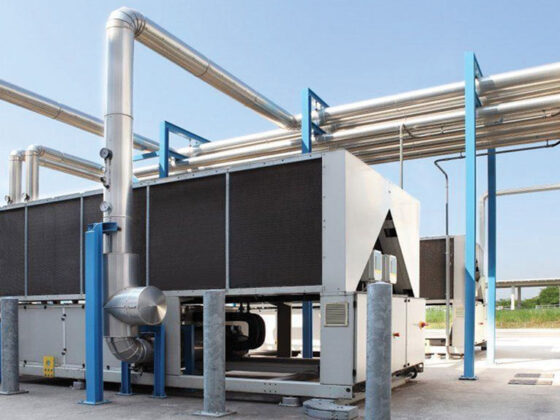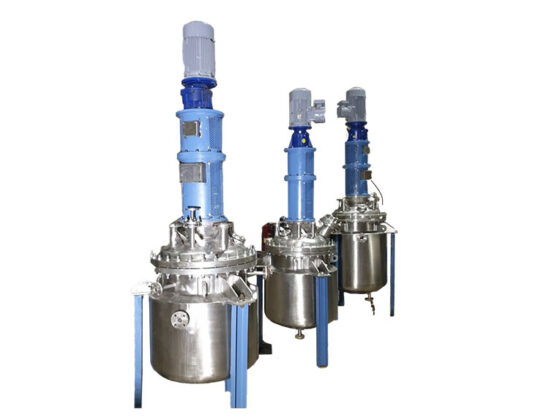Skid-mounted hydrogenators are compact systems that play a crucial role in hydrogen production, and their convenience, efficiency, and cost-effectiveness have garnered significant attention worldwide. The main advantages of our Skid-Mounted Hydrogenators are:
Complete Process View
- Shorter project lead times & Lower total investment costs
- Very short interruption of the running production, especially in case of plant extensions/alterations
- Accurate and fresh assembly of the plant in the modern large-capacity assembly halls
- We make sure with our checkpoints on a Safety test, function test, and pre-delivery, including parameterization and configuration of the control system before the delivery plant

Introduction:
The hydrogenation reactor module consists of:
- The steel structure of the hydrogenation reactor
- Control system
- Accessories, Piping, and fittings
- Instrumentation
Typical hydrogenation reactor modules include reactor sizes ranging from 50 l to 500 l usable volume, 6–100 bar design pressure,, and can be made of various materials. Larger plants have more than one module, including a catalyst preparation station, a catalyst filter, a heating/cooling station, and a flue gas scrubber.
SAR Contempflo Skid-mounted hydrogenators offer a versatile, efficient, and mobile solution for hydrogenation processes across various industries. Their compact, integrated design and advanced automation make them suitable for a wide range of applications, from pharmaceuticals to renewable energy
- Skid-mounted hydrogenators are self-contained units designed for hydrogenation processes, mounted on a skid for easy transportation and installation.
- Purpose: Used to facilitate the hydrogenation process, which involves the addition of hydrogen to various substrates, typically in the presence of a catalyst.
- Advantages: mobility, ease of installation, reduced setup time, and lower initial investment compared to traditional, permanent installations.
SPECIFICATIONS
- Capacity: Upto 500L
- Pressure: Upto 100 Bar
- Temperature: Upto 300°C
- Design: Flame Proof as per Design Standards. ASME Sector VIII Div. 1
- Materials Of Construction: SS-304, SS-316, Hastelloy, Titanium, & all Exotic Metals with/without Bonded metal. Can take up Hydrogenation Plant designs as per the latest PESO norms
- Total Automation: HMI & PLC SCADA
Smaller units with Hydraulic Lifting arrangements.
WORKING PRINCIPLE
- Feed Introduction: The substrate to be hydrogenated is fed into the reactor.
- Hydrogen Supply: Hydrogen gas is introduced into the reactor, typically from a high-pressure source.
- Catalyst Contact: The feed comes into contact with a catalyst within the reactor, facilitating the hydrogenation reaction.
- Reaction: Under controlled temperature and pressure, hydrogen atoms are added to the substrate molecules.
- Product Recovery: The hydrogenated product is separated from the catalyst and collected.
- Control System: Automated systems monitor and adjust parameters such as temperature, pressure, and hydrogen flow rate to maintain optimal reaction conditions.
APPLICATION
- Chemical Industry: Hydrogenation of unsaturated compounds, synthesis of alcohols, and production of specialty chemicals.
- Pharmaceuticals: Hydrogenation of intermediates and active pharmaceutical ingredients (APIs) for improved efficacy and stability.
- Food Industry: Hydrogenation of edible oils to produce margarine and other hydrogenated fats.
- Petrochemical Industry: Hydrogenation processes in refining, such as hydrocracking and desulfurization.
- Renewable Energy: Hydrogenation of biomass-derived feedstocks to produce biofuels and other renewable chemicals.
- Polymer Industry: Hydrogenation of polymers and monomers to enhance properties and performance.
FEATURES
-
- Compact Design: integrated system on a single skid, including reactors, pumps, control systems, and safety devices.
- Modular Construction: Can be customized and scaled according to specific process requirements.
- Automated Control: Advanced control systems for monitoring and adjusting process parameters, ensure consistent and efficient operation.
- Safety Features: Includes pressure relief valves, emergency shutdown systems, and explosion-proof components.
- Materials of Construction: Made from materials compatible with hydrogen and process chemicals, often stainless steel or other corrosion-resistant alloys.
- Mobility: easy to transport and relocate, allowing for flexibility in operation and deployment.
-



